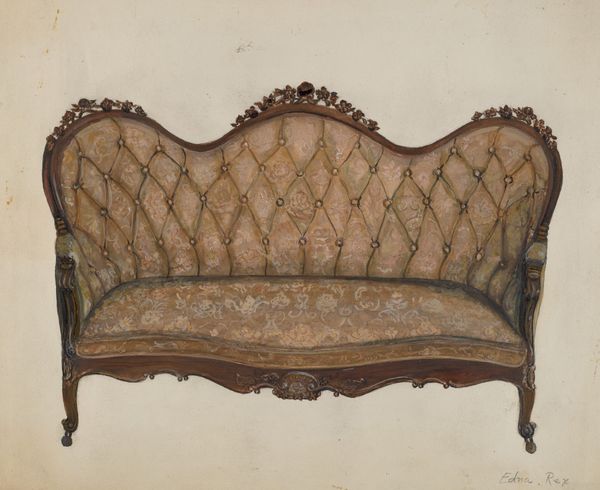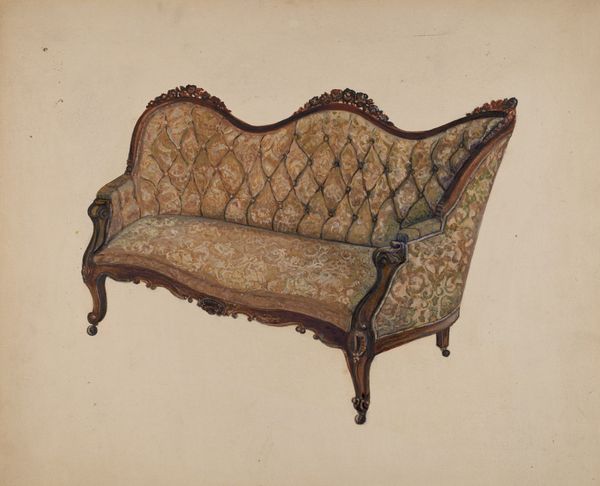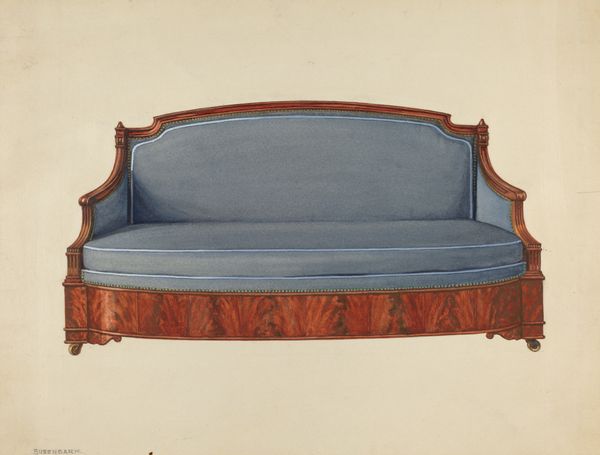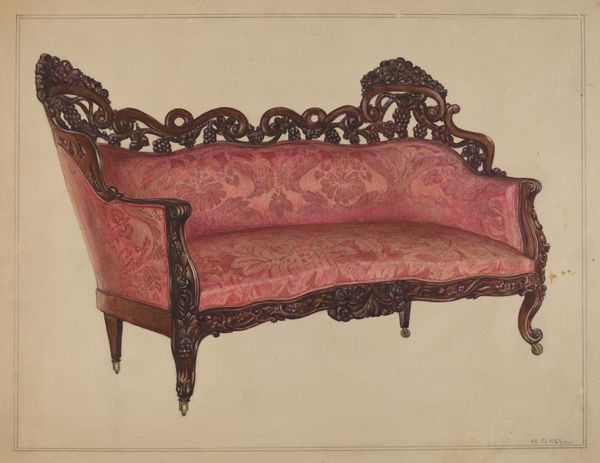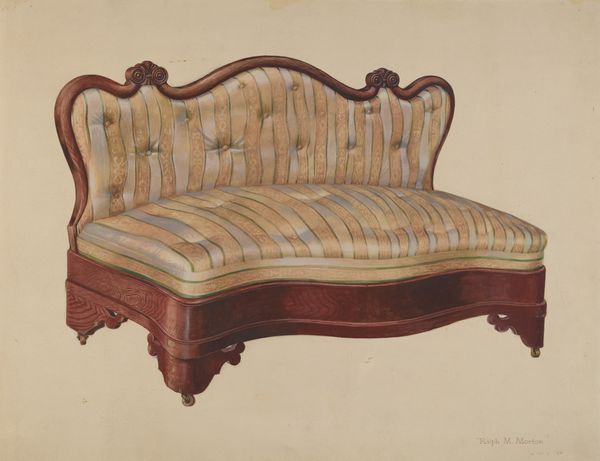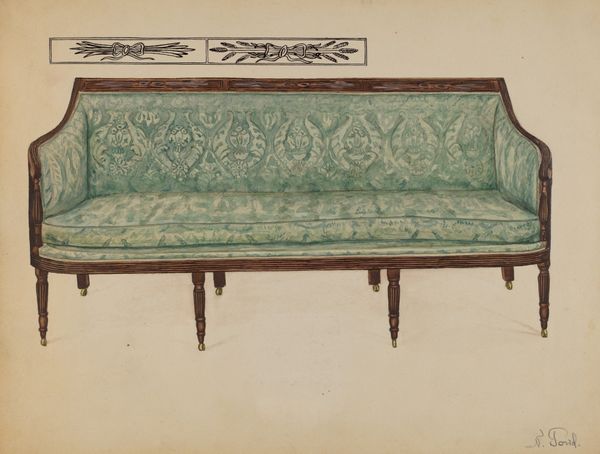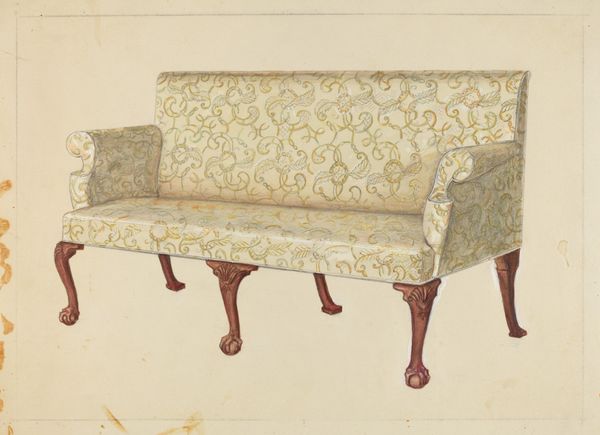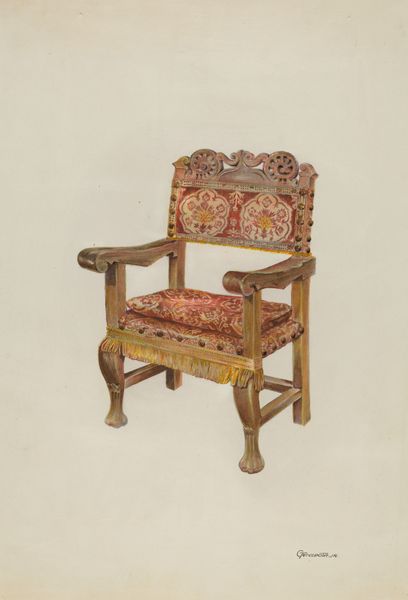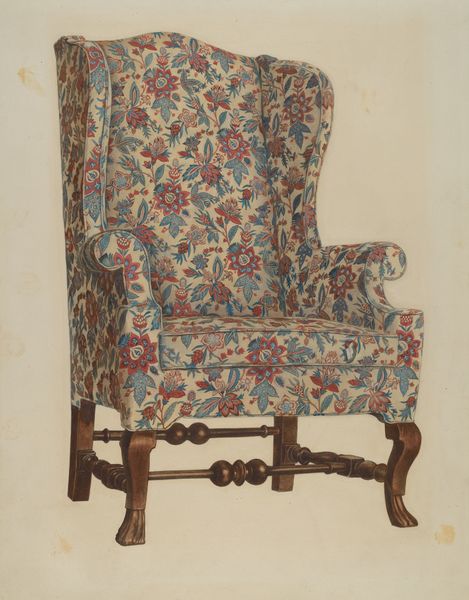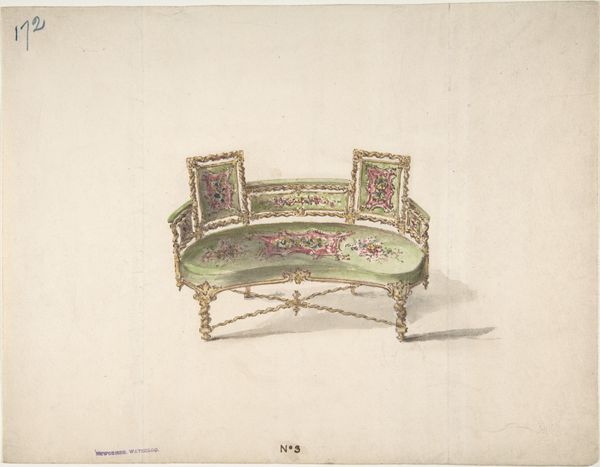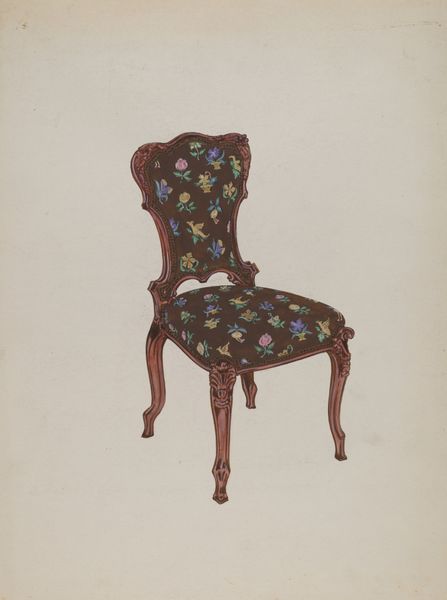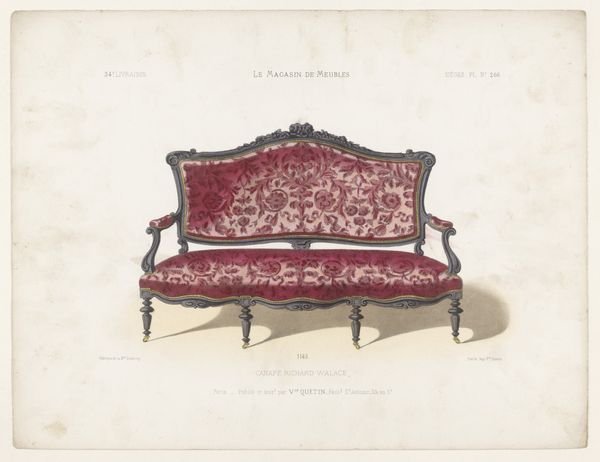
drawing, paper, pencil
#
drawing
#
paper
#
pencil
#
academic-art
#
decorative-art
#
decorative art
#
watercolor
Dimensions: overall: 24.8 x 35.5 cm (9 3/4 x 14 in.) Original IAD Object: 35"high; 48"long; 22 1/2"deep
Copyright: National Gallery of Art: CC0 1.0
Editor: Here we have "Settee," a drawing made with pencil and watercolor on paper, created around 1936 by Florence Huston. What immediately grabs my attention is the intricacy of the floral pattern against the dark fabric. What stands out to you as you consider the form and composition? Curator: The most compelling aspect here lies in the tension between representation and surface. We have a clear depiction of a settee, yes, but the drawing refuses to fully recede into illusionism. Notice how the pencil lines remain evident, asserting the flatness of the paper. Also, observe how the floral patterns, while decorative, become almost abstract fields of color when viewed as pure visual data. Do you see how the objecthood of the settee is almost secondary to the artist’s manipulation of line and color? Editor: That’s fascinating. I was so focused on the realistic depiction that I overlooked how the artist almost disrupts it. Are you suggesting that Huston is more interested in exploring the visual elements than creating a perfect replica of the settee? Curator: Precisely. Consider the academic style, evident in the precise rendering, as a framework within which the decorative art elements–the floral design, the curvilinear forms of the settee itself – can push against that framework. It’s a dialogue between structure and embellishment, order and chaos, if you will. How do you now perceive the work with this in mind? Editor: It’s like the drawing is performing an argument about the nature of representation itself. I see it now; the emphasis isn't on the 'what' but on the 'how.' Curator: Precisely! A fine point well-noted. Editor: Thanks; I am taking away so much to consider.
Comments
No comments
Be the first to comment and join the conversation on the ultimate creative platform.
